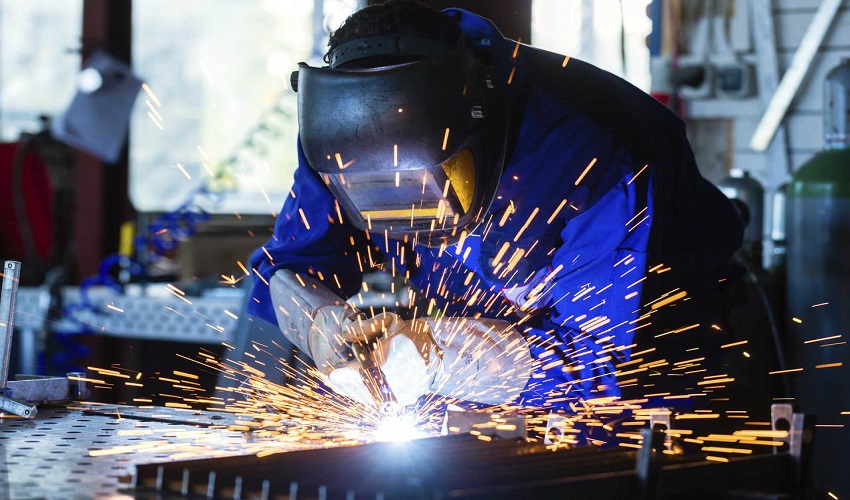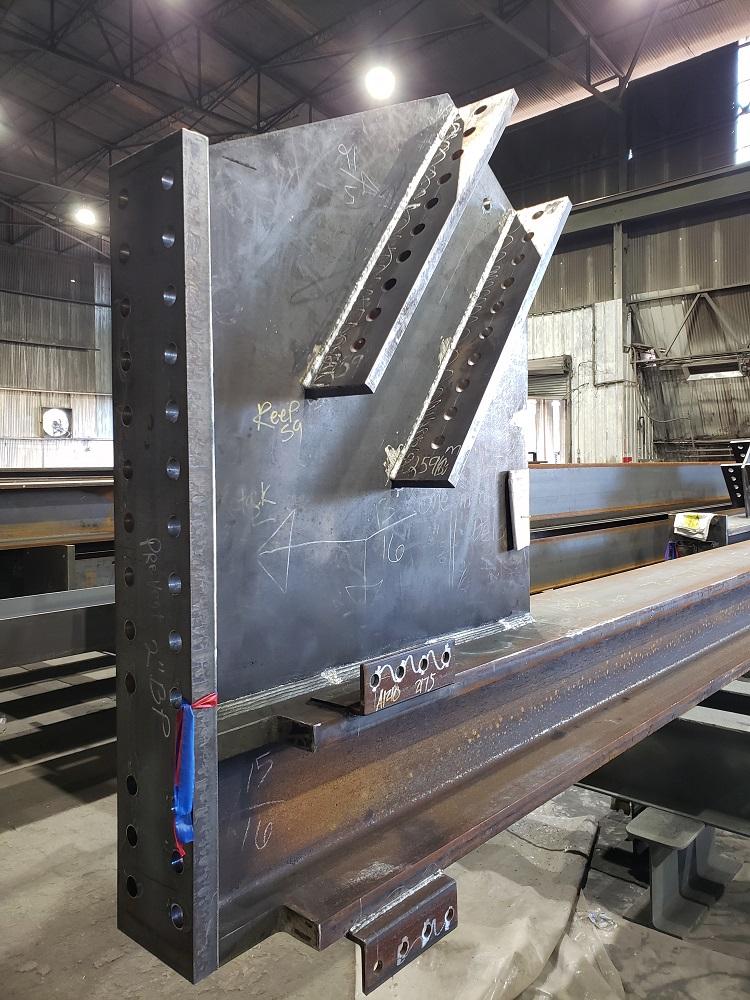Reputable Steel Fixing Solutions: Guaranteeing Structural Integrity
Reputable Steel Fixing Solutions: Guaranteeing Structural Integrity
Blog Article
Top Strategies for Optimizing Steel Fabrication Processes for Maximum Efficiency
In the realm of steel fabrication, the pursuit of efficiency is a continuous objective that drives sector specialists to check out cutting-edge methods and modern technologies. As the need for precision and speed magnifies, companies are compelled to reevaluate their manufacture procedures continuously. From careful design planning to embracing sophisticated modern technologies, the mission for optimal efficiency in steel manufacture entails a complex strategy. By executing leading techniques tailored to maximize operations, companies not only boost performance however also boost the high quality of their output. Allow's check out how these approaches can reinvent steel fabrication procedures, leading the way for extraordinary efficiency and competition in the market.
Reliable Layout Planning
In the world of steel fabrication processes, effective and strategic design preparation plays a pivotal function in enhancing production workflows and maximizing operational performance. The layout of a steel fabrication facility straight influences the efficiency of operations, material circulation, and employee productivity. By very carefully making the arrangement of machinery, workstations, storage areas, and product handling tools, firms can significantly decrease unnecessary motion, decrease product handling times, and optimize the overall production process.
An effective design strategy thinks about aspects such as operations series, closeness of workstations, product handling courses, and safety and security laws. It intends to develop a sensible and structured flow of activities from raw material consumption to the end product dispatch. Through effective layout planning, firms can remove traffic jams, lower manufacturing downtime, and improve the general operational efficiency of the steel fabrication procedure.
In addition, a well-balanced design plan allows better utilization of readily available room, enhanced communication between employees, and improved security practices within the center. On the whole, spending time and resources in developing an effective design plan can generate considerable benefits in regards to boosted efficiency and cost financial savings for steel construction businesses.
Advanced Reducing Technologies
Using cutting-edge technologies in steel fabrication processes enhances precision, efficiency, and general production high quality. Furthermore, plasma cutting innovation has also transformed steel construction by allowing swift and accurate cutting through electrically conductive materials. By including these innovative reducing modern technologies right into steel construction processes, producers can considerably enhance efficiency, reduce manufacturing times, and inevitably improve the high quality of their products.
Automated Welding Equipments

One of the vital advantages of automated welding systems is their capacity to preserve a high degree of accuracy throughout the welding procedure. The precision used by these systems ensures that welds are consistent and fulfill the needed requirements, resulting in more powerful and more trustworthy metal structures. In addition, automated welding systems decrease the danger of human mistake, resulting in less issues and rework.
Moreover, these systems can handle complicated welding jobs easily, including welding in limited rooms or on curved surface areas. This flexibility makes automated welding systems ideal for a large variety of steel fabrication applications, from massive commercial projects to intricate customized styles. On the whole, the implementation of automated welding systems in steel construction processes dramatically boosts efficiency, quality, and general job end results.

Stock Administration Solutions
Enhancing functional effectiveness and enhancing procedures, efficient stock administration options play a vital function in enhancing steel construction operations. By executing robust inventory management systems, important site steel manufacture firms can make certain that the ideal products are offered when needed, minimizing disruptions and hold-ups in manufacturing routines. Utilizing advanced software program remedies permits real-time tracking of inventory degrees, allowing accurate projecting of product requirements and preventing stockouts or overstock scenarios.
Additionally, stock management remedies assist in reducing lugging expenses connected with excess supply and enhance cash circulation by lining up supply degrees with actual need. By categorizing products based on use frequency and visit this site urgency, producers can focus on procurement and storage space allowance, even more boosting operational performance. Furthermore, implementing barcode or RFID innovation facilitates precise inventory monitoring and streamlines the tracking of product motions within the center.
Continuous Refine Renovation
To build on the gains made via efficient supply management options, the focus now changes towards driving constant procedure improvement within steel construction operations. Continual process enhancement is an organized approach aimed at boosting efficiency, decreasing waste, and raising overall high quality throughout the fabrication procedure. By implementing a culture of constant renovation, steel construction firms can recognize traffic jams, simplify process, and enhance resources to take full advantage of efficiency.
One key facet of continual process improvement in steel construction is the routine testimonial and evaluation of manufacturing procedures. This entails gathering feedback from employees, keeping an eye on crucial efficiency indications, and recognizing locations for improvement. By leveraging data-driven understandings, firms can make enlightened choices to drive purposeful adjustments that favorably influence procedures.
Additionally, taking on lean production principles can substantially add to process enhancement in steel fabrication. steel fixing. Methods such as value stream mapping, 5S organization, and Kaizen occasions can aid remove non-value-added activities, standardize processes, and cultivate a society of advancement and constant knowing within the organization
Conclusion
To conclude, enhancing steel manufacture processes for maximum effectiveness calls for careful planning, using innovative cutting innovations, applying automated welding systems, managing inventory efficiently, and continually boosting processes. By incorporating these methods, suppliers can boost productivity, decrease expenses, and improve general efficiency in look at here now the steel manufacture sector.
Via effective layout planning, companies can eliminate bottlenecks, decrease production downtime, and improve the general operational effectiveness of the steel construction procedure. steel fixing.
Making use of cutting-edge technologies in steel manufacture procedures boosts accuracy, effectiveness, and general production high quality. By incorporating these advanced cutting technologies right into steel manufacture procedures, makers can substantially enhance efficiency, decrease production times, and eventually boost the quality of their items.
On the whole, the application of automated welding systems in steel manufacture processes significantly improves performance, high quality, and overall project end results.
One secret aspect of continual procedure improvement in steel fabrication is the normal evaluation and analysis of manufacturing processes. (Alpha reo)
Report this page